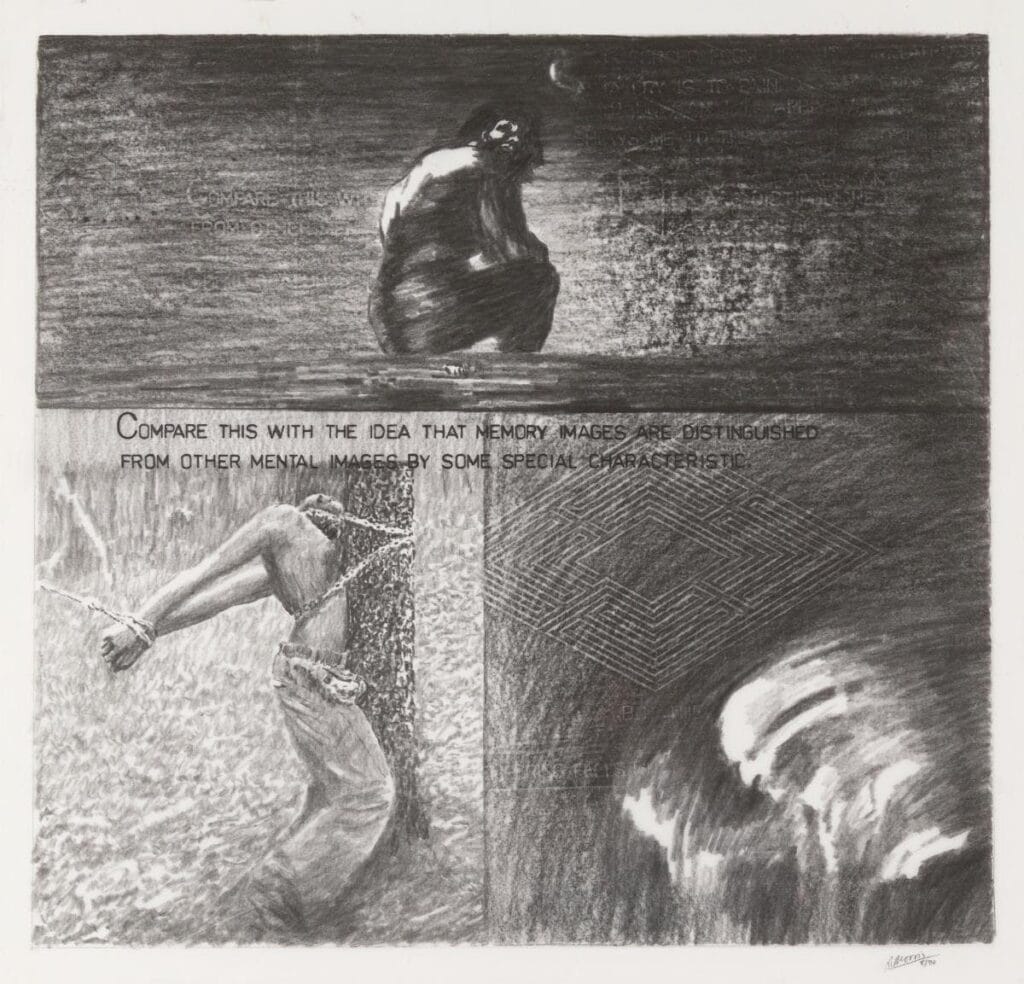At Frieze Masters in London, we will be presenting a booth of works on paper by Robert Morris, ranging from Labyrinth and Blind Time drawings to a group of ten Investigations drawings.
On this occasion, we invited Pepe Karmel to write about the Investigations.
Pepe Karmel is an Associate Professor of Art History at New York University.
Robert Morris’ Investigations offer a meditation on the failed dream of Minimalism, the historic movement that Morris founded with his rectangular gray Column of 1961. The conceptual coherence and perceptual presence of Minimal construction seemed, briefly, to offer an escape from the incoherence of everyday experience and the rampant hypocrisy of public life. But Morris remained haunted by the futility of the quest for order and meaning. Beginning in 1967, he made work in a mind-boggling range of media: threadwaste, industrial felt, mirrors, metal beams and plates, expanded mesh, fiberglass, dirt, steam, labyrinths, hydrocal reliefs, human skeletons, rubbings from bodies and objects, voice and sound. Time and again, he demonstrated the triumph of entropy over intention and brutality over reason.
Morris’ drawings of the 1970s were often studies for constructions or earthworks, or seismographic records of the body in motion. In the Investigations of 1988-1990, however, he uses remembered images, unified by obsessive shading, to survey American history since his birth in 1931. The resulting drawings exemplify what Leo Steinberg called the “flatbed picture plane.” Where a conventional picture plane evokes a single unified space, the flatbed picture plane alludes to “hard surfaces such as tabletops, studio floors, charts, bulletin boards,” any surface “on which information may be received, printed, impressed—whether coherently or in confusion.” Liberated from conventional realism, it serves as a pictorial equivalent to the stream-of-consciousness narratives of James Joyce and Virginia Woolf, or the free association that Sigmund Freud used to unlock the unconscious.

The Investigations present a nightmare vision. Morris repeats the images of a tortured man tied to a tree and sullen female guards from a Nazi concentration camp. Mobs of policemen assault protestors. A midwestern family runs toward a wooden shack to take shelter from a dust storm; the gray sky of the original image (a 1936 photograph by Arnold Rothstein) becomes an apocalyptic deluge by Leonardo da Vinci. But terror co-exists with the beauty of the human body, exemplified by goddesses from the Parthenon and nude male wrestlers from Eadweard Muybridge. It also co-exists with courage: Jackson Pollock bent over one of his mural canvases, a youthful Howard Hughes perched in the cockpit of his airplane. The title of the series is drawn from Ludwig Wittgenstein’s Philosophical Investigations, and Wittgenstein’s text threads through the drawings, providing commentary and counterpoint.

The drawings are also haunted by Morris himself. One sheet reproduces a photograph of Morris and Carolee Schneeman in his 1964 performance Site. More often, however, he is represented by his black-and-white striped Labyrinth of 1982, elegant and claustrophobic. Francisco Goya’s Seated Giant provides another avatar, recurring in several of the drawings. Perched on a ridge, turning to gaze at the darkened plain behind him, he recalls T.S. Eliot’s Fisher King, explaining “These fragments I have shored against my ruins” as he struggles to make sense of the wasteland he inhabits.
?
— Pepe Karmel
